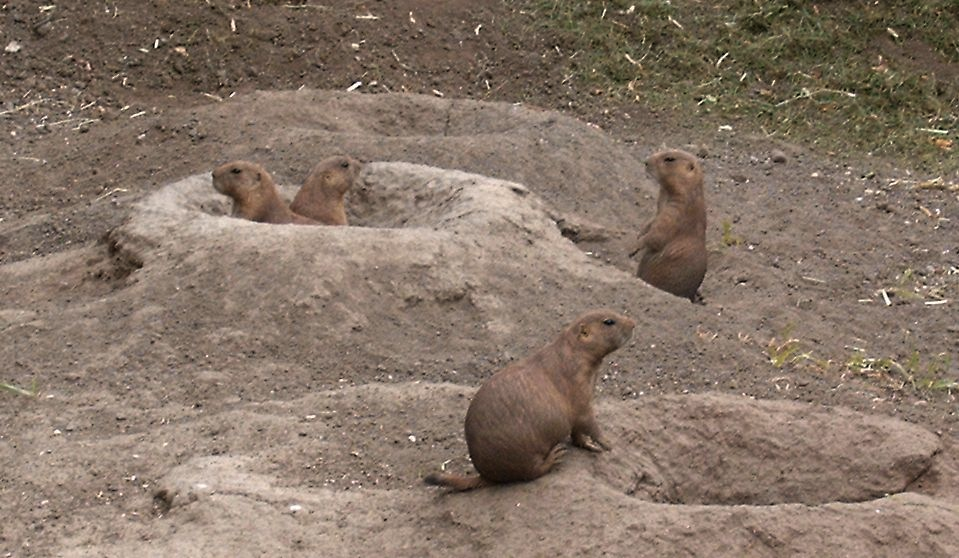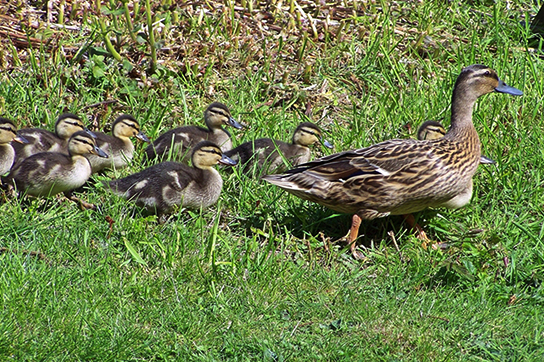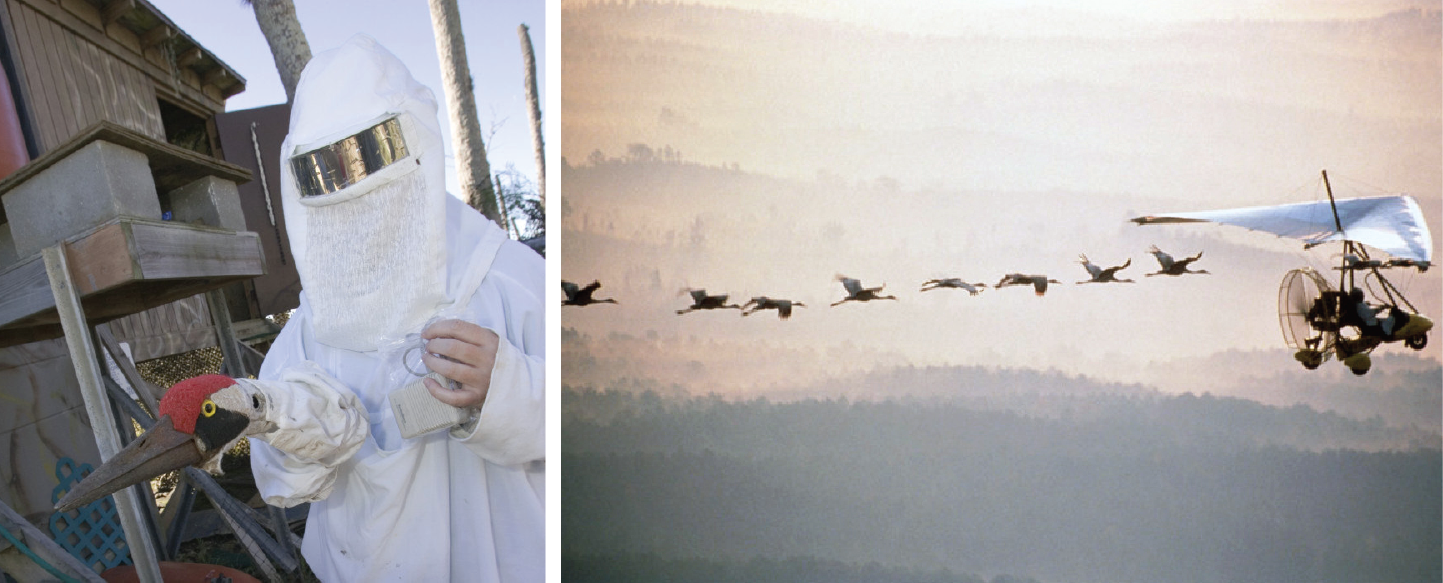PERILAKU YANG DIPELAJARI (LEARNED BEHAVIORS
learned behavior
Habituation, imprinting, classical conditioning, operant conditioning and cognitive learning.
Rangkaman
- Habituation is simply a learned behavior in which the foraging animal gradually ceases receiving repeated stimuli.
- Impressions are a special form of behavioral learning that takes place in young animals over a short period of time - for example, impressions from a mother duck.
- In classical conditioning , a new stimulus is linked to an already existing response through repeated placement of new and already known stimuli.
- In operant conditioning , the researcher learns to perform the behavior repeatedly through a reward or networks that perform the behavior for the reward. Animal researchers learn to perform a behavior primarily in response to punishment, or to perform a behavior in response to punishment.
- Some animals, particularly primates, are capable of more complex forms of learning such as problem solving and mind mapping.
- Habituation is simply a learned behavior in which the foraging animal gradually ceases receiving repeated stimuli.
- Impressions are a special form of behavioral learning that takes place in young animals over a short period of time - for example, impressions from a mother duck.
- In classical conditioning , a new stimulus is linked to an already existing response through repeated placement of new and already known stimuli.
- In operant conditioning , the researcher learns to perform the behavior repeatedly through a reward or networks that perform the behavior for the reward. Animal researchers learn to perform a behavior primarily in response to punishment, or to perform a behavior in response to punishment.
- Some animals, particularly primates, are capable of more complex forms of learning such as problem solving and mind mapping.
predecessor
If you have a search dog—or you have friends who have search dogs—you probably know that dogs can prevent things like sitting, asking, turning, and doing dead. This is an example of learned behavior and dogs can learn exponentially. According to some experts, highly intelligent dogs have the cognitive abilities of two and a half human years! High start, 1, high end In general, learned behavior is behavior that organisms develop as a result of experience. Learned behavior differs from innate behavior, which is genetic and can be performed without prior experience or training. Of course, some behaviors are learned and innate. For example, zebra finches are genetically programmed to learn songs, but which song they sing depends on what they heard from their father. In the following discussion we will consider some examples of learned animal behavior. We start with simple things like habituation and imprinting and then move on to complex cases like operant conditioning and cognitive learning.
If you have a search dog—or you have friends who have search dogs—you probably know that dogs can prevent things like sitting, asking, turning, and doing dead. This is an example of learned behavior and dogs can learn exponentially. According to some experts, highly intelligent dogs have the cognitive abilities of two and a half human years! High start, 1, high end
In general, learned behavior is behavior that organisms develop as a result of experience. Learned behavior differs from innate behavior, which is genetic and can be performed without prior experience or training. Of course, some behaviors are learned and innate. For example, zebra finches are genetically programmed to learn songs, but which song they sing depends on what they heard from their father.
In the following discussion we will consider some examples of learned animal behavior. We start with simple things like habituation and imprinting and then move on to complex cases like operant conditioning and cognitive learning.
Learn behavior in its simplest form
Learned behavior, while it may have an innate component or basis for behavior, enables individual organisms to adapt to changes in their environment. behavior acquired as a result of changes in the past; Examples of simple learned behaviors are habituation and imprinting.
Learned behavior, while it may have an innate component or basis for behavior, enables individual organisms to adapt to changes in their environment. behavior acquired as a result of changes in the past; Examples of simple learned behaviors are habituation and imprinting.
to get used to something
Habituation is a simple form of learning in which an animal stops responding to stimuli or cues after repeated exposure. It is a form of non-associative learning, meaning that the incentive is not associated with punishment or reward. For example, prairie dogs usually mask an alarm signal when threatened by a predator. They will initially make this call in response to human footsteps they hear, indicating they are hot and possibly hungry. However, prairie dogs gradually become accustomed to the sound of human footsteps and hear the sound many times without anything unusual. Eventually they stopped giving warning calls in response to footsteps. In this example, habituation is specific to the sound of human footsteps, as it still responds to the sounds of other predators.
Habituation is a simple form of learning in which an animal stops responding to stimuli or cues after repeated exposure. It is a form of non-associative learning, meaning that the incentive is not associated with punishment or reward.
For example, prairie dogs usually mask an alarm signal when threatened by a predator. They will initially make this call in response to human footsteps they hear, indicating they are hot and possibly hungry.
However, prairie dogs gradually become accustomed to the sound of human footsteps and hear the sound many times without anything unusual. Eventually they stopped giving warning calls in response to footsteps. In this example, habituation is specific to the sound of human footsteps, as it still responds to the sounds of other predators.
an impression
Imprinting is a simple and very specific type of learning that takes place at a specific age or life stage during the development of some animals such as ducks and geese. When chicks hatch, they retain memories of the first adult animal they saw, usually their mother. Once the duckling has retained memories of its mother, its movements serve as cues to trigger a range of behaviors that promote survival, such as: B. Following and imitating his mother. How do we know that sealing isn't an innate behavior that teaches chicks to follow the females? That is, how do we know that imprinting is behavior that consists of an experiential learning process? When newborn ducklings or geese see a person before they see their mother, they register the person with their mother and follow them in the same way as their mother (the duckling). An interesting case of monetizing footprints involves efforts to rehabilitate the critically endangered whooping crane by raising chicks in captivity. The biologists wore full royal stork costumes as they cared for the young birds, making sure they didn't touch people but rather the stuffed birds that were part of the costume. Finally, they teach the birds to migrate using light aircraft and prepare them for release. High start, 2, comma, 3, high end
Imprinting is a simple and very specific type of learning that takes place at a specific age or life stage during the development of some animals such as ducks and geese. When chicks hatch, they retain memories of the first adult animal they saw, usually their mother. Once the duckling has retained memories of its mother, its movements serve as cues to trigger a range of behaviors that promote survival, such as: B. Following and imitating his mother.
How do we know that sealing isn't an innate behavior that teaches chicks to follow the females? That is, how do we know that imprinting is behavior that consists of an experiential learning process? When newborn ducklings or geese see a person before they see their mother, they register the person with their mother and follow them in the same way as their mother (the duckling).
An interesting case of monetizing footprints involves efforts to rehabilitate the critically endangered whooping crane by raising chicks in captivity. The biologists wore full royal stork costumes as they cared for the young birds, making sure they didn't touch people but rather the stuffed birds that were part of the costume. Finally, they teach the birds to migrate using light aircraft and prepare them for release. High start, 2, comma, 3, high end
conditioned behavior
Langganan:
Posting Komentar (Atom)




0 Response to "PERILAKU YANG DIPELAJARI (LEARNED BEHAVIORS"
Posting Komentar